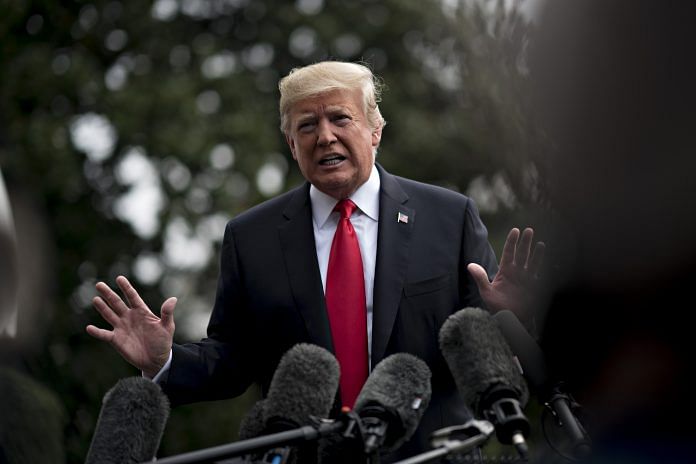Iran’s attack on a U.S. spy drone on Thursday was a reckless escalation of an already simmering crisis. It was also evidence that the Trump administration’s “maximum pressure” campaign against the regime is working. The question is what the U.S. does next.
Thanks to American sanctions, Iran’s economy is hurting: A recession is deepening, inflation is likely to hit 50%, and the rial may never recover from last year’s plunge. Tehran is losing hope that other countries will defy the sanctions and reward it for adhering to the 2015 nuclear deal.
This pressure has panicked the regime into irrational, dangerous behavior. It has resumed uranium enrichment and is threatening to exceed the limit agreed to in 2015, even though this would invite a “snapback” of additional sanctions. It’s almost certainly behind recent attacks on international shipping near the Persian Gulf. Its proxies are likely responsible for rocket attacks on oil facilities in Saudi Arabia and Iraq. And now, most ominously, it has blown up an extremely sensitive piece of American hardware.
All this has prompted a U.S. military buildup in the region: more warships, fighter jets and troops have been deployed. Although both sides have stated that they wish to avoid a war, one might be sparked by a single miscalculation. What now?
Further military escalation in response to the drone strike is inadvisable. But there aren’t many more sanctions that the U.S. can slap on the regime. Nor can it easily summon a strong international response to Iran’s recklessness, thanks to the administration’s lack of credibility among allies as well as foes.
The problem is that the president has never properly articulated his goals in Iran. Instead, he’s allowed different members of his team to pursue their own agendas. In recent days, even as Secretary of State Mike Pompeo was saying the U.S. was open to negotiations without preconditions, National Security Adviser John Bolton was implying that talks would only take place after Iran ended its “40-year reign of terror.” Trump himself has sent contrary signals.
This damaging confusion needs to end. Trump should present the world with an unambiguous statement of what his strategy aims to achieve and why, and reiterate that he doesn’t want war with Iran. He should then make clear that he’s open to negotiations toward a grand bargain that will lift sanctions if the regime stops menacing its neighborhood and the wider world — not only with nuclear weapons, but also with ballistic missiles, conventional forces and proxy militias.
It would also help to express credible sympathy toward ordinary Iranians caught between American sanctions and a repressive regime. Trump should support a Swiss effort to deliver medicine and other essential goods, and drop threats against an Iranian financial body created to facilitate humanitarian trade. He might also take Iran off the list of countries whose citizens are barred from entry to the U.S.; his hand would only be strengthened by welcoming those who want to flee the regime.
Trump will have an excellent setting to make such a clarifying statement next week, at the G-20 summit in Japan. Peace in the Gulf — and in the broader Middle East — may well depend on it.
Also read: Amid soaring US-Iran tensions, a look at why and how the situation escalated this far






